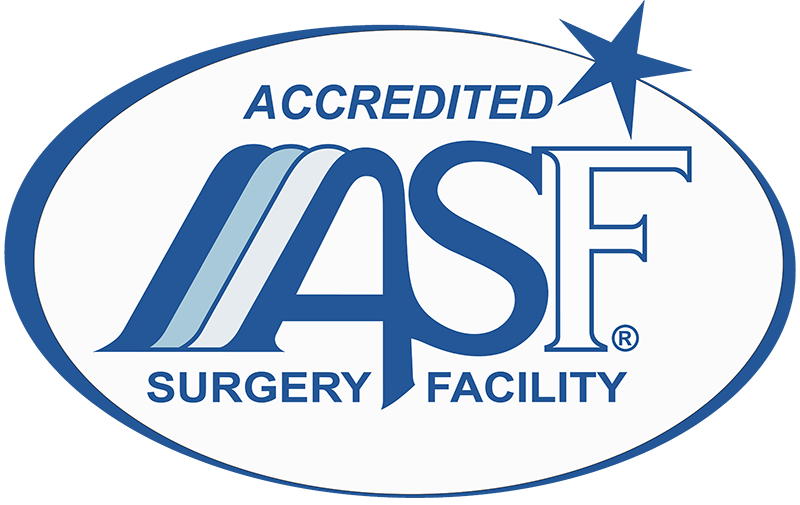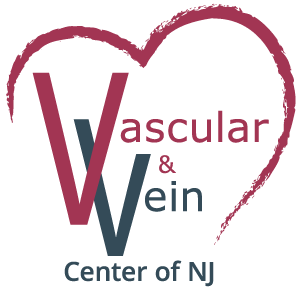Stroke
A stroke may when the blood supply to part of your brain is interrupted or reduced, depriving brain tissue of oxygen and nutrients. Within minutes, brain cells begin to die.
A stroke is a medical emergency. Prompt treatment is crucial. Early action can minimize brain damage and potential complications.
ISCHEMIC STROKE, approximately 75% of all strokes, can occur when blood supply to your brain is blocked.
HEMMORRHAGIC STROKE can occur when there is bleeding in your brain.
TRANSIENT ISCHEMIC ATTACK (TIA) or mini-stroke is a condition similar to stroke, but the symptoms only last seconds or a few minutes and completely resolve within 24 hours. Can be a warning sign of a future stroke, and medical attention should be sought as soon as possible.
CALL 911
Stroke is a medical emergency. If you experience any of the symptoms below, seek immediate medical attention.
CAN BE DISABLING, MAY CAUSE DEATH
Stroke is the fourth most common cause of death in the United States, and the most common cause of permanent disability.
UNDERLYING CAUSES TREATABLE IF DIAGNOSED EARLY
Most causes of stroke are treatable with medical and surgical intervention, provided they are diagnosed early.
Diagnosis
Once the symptoms of a stroke have already occurred, diagnosis is usually confirmed by obtaining a detailed picture of your brain with either an MRI or computerized tomography (CT) scan.
TO PREVENT a stroke from every occurring, there are other tests that may be performed to evaluate your risk:
Routine medical evaluation with blood pressure measurements.
Routine blood tests that measure cholesterol and triglyceride levels.
An EKG (electrocardiogram) that diagnoses the abnormal heart rhythyms which can cause a stroke.
An echocardiogram (ECHO), an ultrasound picture of your heart, which can diagnose certain heart or heart valve conditions which can cause a stroke.
A carotid duplex scan, or ultrasound of your carotid arteries, which can reveal plaque buildup or narrowing of the carotid arteries, which can lead to a stroke.
Treatments
MEDICATION & REHABILITATION
In most cases, treatment following a stroke includes medication and rehabilitation to help you recover skills or faculties affected by the stroke. Unfortunately, many stroke patients do not recover fully.
VESSEL REPAIR
If you are fortunate and reach a high-level medical center within 4-6 hours of the initiation of the stroke, it may be possible to open the damaged or blocked blood vessel with medications or procedures.
FOLLOWING TIA
If you have a transient ischemic attack, tests can be done to check for possible causes of a future stroke. Preventive treatment may include:
MEDICATION to control high blood pressure and high cholesterol, or thin the blood.
VESSEL REPAIR through carotid endarterectomy or balloon angioplasty to open the carotid artery, or placement of a carotid stent to widen the artery.
Staying Healthy
Knowing your stroke risk factors, following your doctor’s recommendations and adopting a healthy lifestyle are the best steps you can take to prevent a stroke. If you’ve had a stroke or a transient ischemic attack (TIA), these measures might help prevent another stroke. The follow-up care you receive in the hospital and afterward also may play a role as well.
Many stroke prevention strategies are the same as strategies to prevent heart disease. In general, healthy lifestyle recommendations include:
● Controlling high blood pressure (hypertension). This is one of the most important things you can do to reduce your stroke risk. If you’ve had a stroke, lowering your blood pressure can help prevent a subsequent TIA or stroke.
Exercising, managing stress, maintaining a healthy weight and limiting the amount of sodium and alcohol you eat and drink can all help to keep high blood pressure in check. In addition to recommending lifestyle changes, your doctor may prescribe medications to treat high blood pressure.
● Lowering the amount of cholesterol and saturated fat in your diet. Eating less cholesterol and fat, especially saturated fat and trans fats, may reduce the plaque in your arteries. If you can’t control your cholesterol through dietary changes alone, your doctor may prescribe a cholesterol-lowering medication.
● Quitting tobacco use. Smoking raises the risk of stroke for smokers and nonsmokers exposed to secondhand smoke. Quitting tobacco use reduces your risk of stroke.
● Controlling diabetes. You can manage diabetes with diet, exercise, weight control and medication.
● Maintaining a healthy weight. Being overweight contributes to other stroke risk factors, such as high blood pressure, cardiovascular disease and diabetes. Losing as little as 10 pounds may lower your blood pressure and improve your cholesterol levels.
● Eating a diet rich in fruits and vegetables. A diet containing five or more daily servings of fruits or vegetables may reduce your risk of stroke. Following the Mediterranean diet, which emphasizes olive oil, fruit, nuts, vegetables and whole grains, may be helpful.
● Exercising regularly. Aerobic or “cardio” exercise reduces your risk of stroke in many ways. Exercise can lower your blood pressure, increase your level of high-density lipoprotein cholesterol, and improve the overall health of your blood vessels and heart. It also helps you lose weight, control diabetes and reduce stress. Gradually work up to 30 minutes of activity — such as walking, jogging, swimming or bicycling — on most, if not all, days of the week.
● Drinking alcohol in moderation, if at all. Alcohol can be both a risk factor and a protective measure for stroke. Heavy alcohol consumption increases your risk of high blood pressure, ischemic strokes and hemorrhagic strokes. However, drinking small to moderate amounts of alcohol, such as one drink a day, may help prevent ischemic stroke and decrease your blood’s clotting tendency. Alcohol may also interact with other drugs you’re taking. Talk to your doctor about what’s appropriate for you.
● Treating obstructive sleep apnea (OSA). Your doctor may recommend an overnight oxygen assessment to screen for OSA — a sleep disorder in which the oxygen level intermittently drops during the night. Treatment for OSA includes oxygen at night or wearing a small device in your mouth to help you breathe.
● Avoiding illegal drugs. Certain street drugs, such as cocaine and methamphetamines, are established risk factors for a TIA or a stroke. Cocaine reduces blood flow and can narrow the arteries.
Preventive medications
If you’ve had an ischemic stroke or TIA, your doctor may recommend medications to help reduce your risk of having another stroke. These include:
● Anti-platelet drugs. Platelets are cells in your blood that form clots.
○ Aspirin
○ Plavix/Clopidogrel
○ Aggrenox, a combination of low-dose aspirin and the anti-platelet drug dipyridamole to reduce the risk of blood clotting.
● Anticoagulants. These drugs, which include heparin and warfarin (Coumadin, Jantoven), reduce blood clotting.
Symptoms
PARALYSIS OR MOVEMENT PROBLEMS
Paralysis of an arm or leg or your face; difficulty walking.
SPEECH & COGNITION PROBLEMS
Trouble speaking or understanding others, slurred speech, confusion or dizziness.
LOSS OF VISION
Causes
ISCHEMIC STROKE, where the blood supply to a part of your brain is interrupted, is most commonly related to:
High blood pressure (hypertension), which can damage the small blood vessels in your brain.
Abnormal heart rhythms, such as atrial fibrillation, which can cause small blood clots in your heart. These can break off and travel to your brain, blocking the blood supply.
Hardening of the arteries (atherosclerosis), a buildup of plaque in the carotid arteries that bring blood to your brain. Plaque can build up over time in arteries as you get older due to long-term effects of illnesses like high blood pressure, high cholesterol levels and diabetes. Pieces of this plaque can break off and travel to your brain.
TRANSIENT ISCHEMIC ATTACK (TIA) has the same causes as ischemic stroke.
HEMMORRHAGIC STROKE, or bleeding within your brain, is typically caused by:
Head or brain injury.
Certain types of congenital brain aneurysms.
Very high blood pressure and bleeding from arteries already diseased from high blood pressure or atherosclerosis.
Risk Factors
Certain conditions and risk factors may increase your risk of stroke. Including:
● Being medically overweight
● Physical inactivity
● Heavy or binge drinking
● Use of illicit drugs such as cocaine and methamphetamines
● High or poorly controlled blood pressure
● Cigarette smoking or exposure to secondhand smoke
● High cholesterol
● Diabetes
● Obstructive sleep apnea
● Cardiovascular disease, including heart failure, heart defects, heart infection or abnormal heart rhythm
● Personal or family history of stroke, heart attack or transient ischemic attack
Other factors associated with a higher risk of stroke include:
● Age —People age 55 or older have a higher risk of stroke than do younger people.
● Race — African-Americans have a higher risk of stroke than do people of other races.
● Sex — Men have a higher risk of stroke than women. Women are usually older when they have strokes, and they’re more likely to die of strokes than are men.
● Hormones — use of birth control pills or hormone therapies that include estrogen, as well as increased estrogen levels from pregnancy and childbirth.


